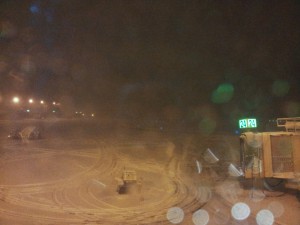 It was a bit sketchy, but we finally made it to San Francisco for the Game Developers Conference (GDC). The insanely late snowfall in Kansas City resulted in our flight being delayed, but at least it wasn’t cancelled. This was the first time I have been through the deicing process. It was interesting, if time-consuming. Once we were in the air and above the clouds, everything seemed far less dreary and dreadful.
It was a bit sketchy, but we finally made it to San Francisco for the Game Developers Conference (GDC). The insanely late snowfall in Kansas City resulted in our flight being delayed, but at least it wasn’t cancelled. This was the first time I have been through the deicing process. It was interesting, if time-consuming. Once we were in the air and above the clouds, everything seemed far less dreary and dreadful.
Upon arrival, we did the usual things: take the noisy BART ride to Powell station, leave our bags at the hotel, wander aimlessly until check-in time, check-in, get our GDC badges when registration opens, and celebrate with Naan & Curry. I’ve been to many different conferences, some big, some small, and the folks running the GDC have the process down to a science! Once registration opened, we were in and out with our badges within a couple of minutes. It was amazingly quick!
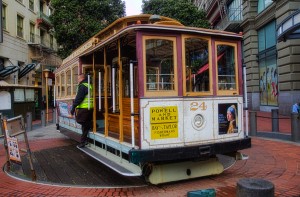 Monday morning also began in the traditional way with me waiting for the rest of the crew down by the cable car turn-around at Powell St taking photos. I know that I end up taking a lot of the same types of shots year after year, and I need to work on my variety, but I just dig that spot so much for imaging the cable cars. Once everyone has mustered, we head off to the best breakfast joint in the area, Mel’s Drive-In. Mel’s is one of the best places around to have breakfast, and with steak-n-eggs only costing $7.99, it’s tough to beat the price, especially in San Francisco!
Monday morning also began in the traditional way with me waiting for the rest of the crew down by the cable car turn-around at Powell St taking photos. I know that I end up taking a lot of the same types of shots year after year, and I need to work on my variety, but I just dig that spot so much for imaging the cable cars. Once everyone has mustered, we head off to the best breakfast joint in the area, Mel’s Drive-In. Mel’s is one of the best places around to have breakfast, and with steak-n-eggs only costing $7.99, it’s tough to beat the price, especially in San Francisco!
Every year, I go to the Math and Physics for Game Programmers. Monday is all about the mathematics and Tuesday is all about the physics. The topics and presentations are usually the same with minor tweaks from year to year, but today the presentations were outstanding. Squirrel Eiserloh from Southern Methodist University gave his usual talk on interpolations and splines, but with more focus and less superfluous material than last year. Here’s last year’s presentation: http://essentialmath.com/GDC2012/GDC12_Eiserloh_Squirrel_Interpolation-and-Splines.ppt. Be sure to also download his OpenGL-based demo tool. It’s a fun little app for exploring the properties of the various types of curves and splines he describes in his talk.
The second talk of the day was by Jim Van Verth, who is notorious for losing his voice at GDC. Normally, this takes about half a day, but this year, he was tight and scratchy from the get-go. His energy level this year, however, was much higher, and he was a much more engaging speaker than in the past. He also did a LOT of work on his presentation. I found his previous presentations on rotations and quaternions rather unenlightening. This year he knocked it out of the park! I think I actually get this quaternion stuff! It helped that he related them back to quantum physics and spin groups, with a nice sprinkling of hyperspatial geometry thrown in for good measure. You know it’s a good conference when you hear a serious discussion of hyperspheres and how to visualize them. His 2013 slides aren’t up just yet, but you can check out his site, http://www.essentialmath.com/ in a couple of weeks. He’ll have them up before too long. If the rest of the conference were cancelled right now, I think that my finally understanding the nature, behaviour, and deeper mathematical roots of quaternions makes the whole trip worth it. The rest of the week is gravy!
Tomorrow is all about the physics! Last year, there were some great talks regarding integration methods and collision detection. Hoping that this year, I can finally wrap my head around this configuration-space stuff.
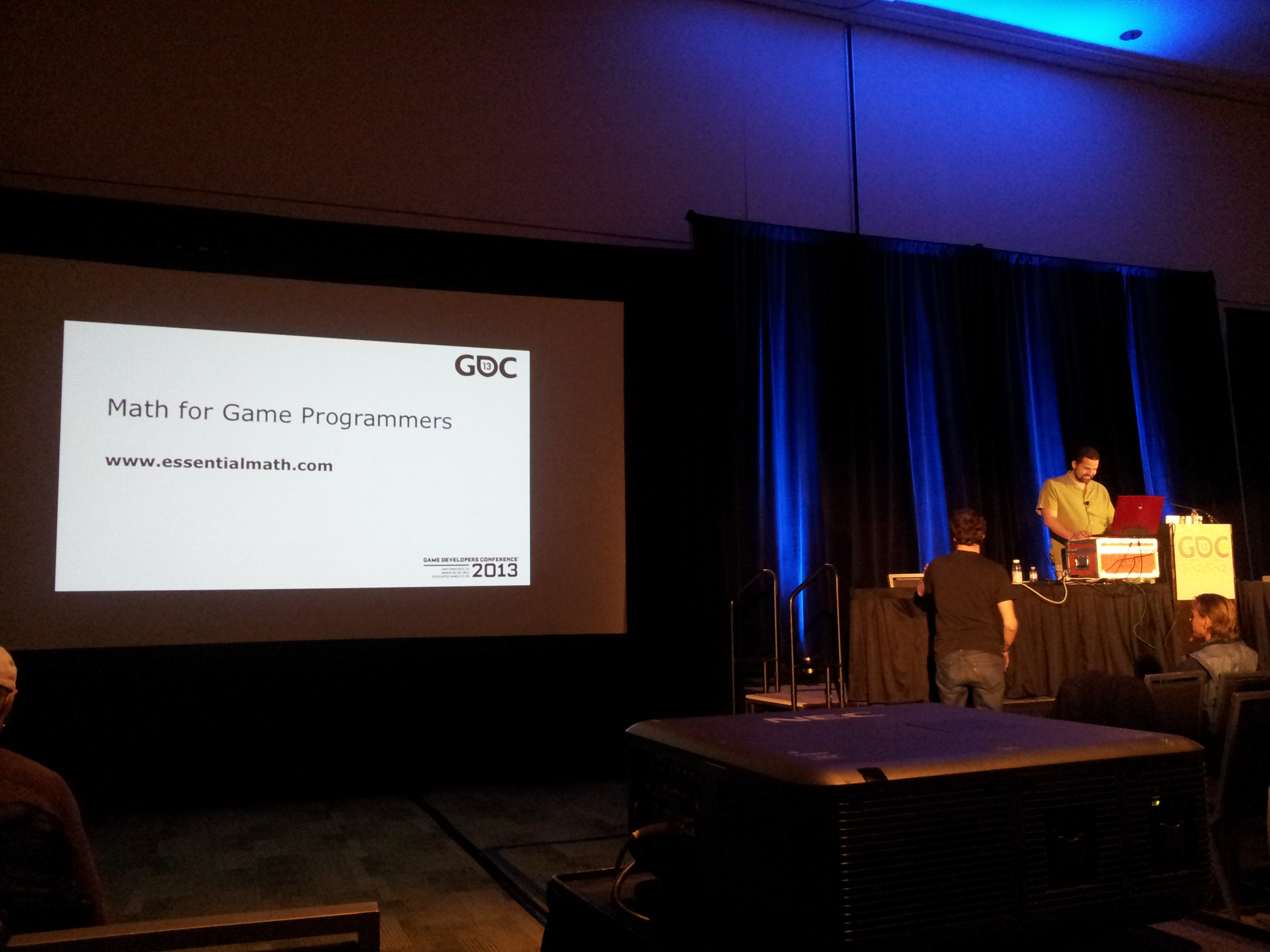
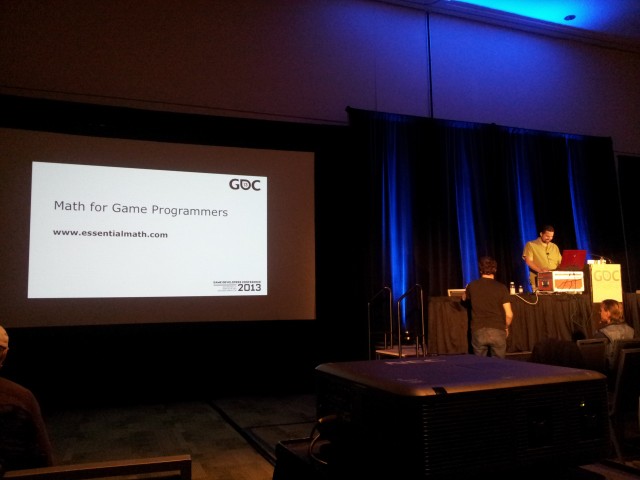
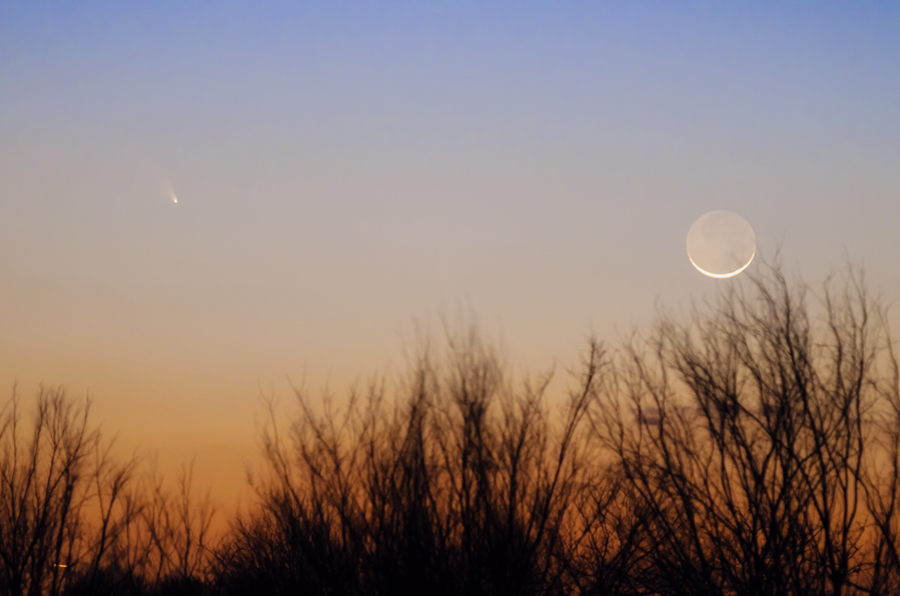
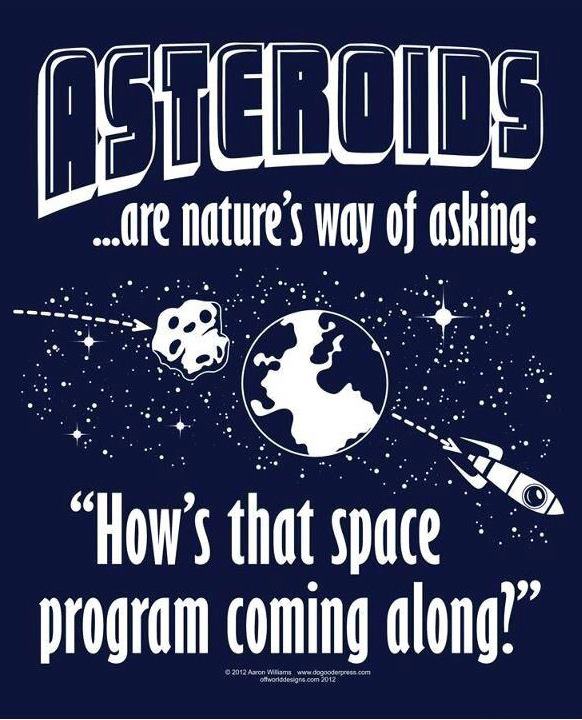

 I recently had the amazing opportunity to go to the Kennedy Space Center as an invited guest to see the launch of a pair of spacecraft, the
I recently had the amazing opportunity to go to the Kennedy Space Center as an invited guest to see the launch of a pair of spacecraft, the 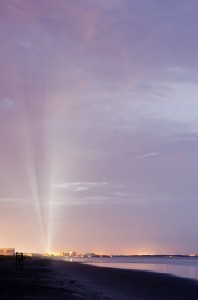 It was your typical cocktail party with everyone standing around awkwardly having awkward conversations, awkwardly introducing people they’d just met to other people they’d just met, while trying to juggle silverware, plate, and drink in one hand to shake hands with the other.
It was your typical cocktail party with everyone standing around awkwardly having awkward conversations, awkwardly introducing people they’d just met to other people they’d just met, while trying to juggle silverware, plate, and drink in one hand to shake hands with the other.  Apparently, August is sea turtle hatching season, and my wife and I got to witness one young, lucky turtle make it from the beach to the sea without becoming breakfast for the lurking sea gulls.
Apparently, August is sea turtle hatching season, and my wife and I got to witness one young, lucky turtle make it from the beach to the sea without becoming breakfast for the lurking sea gulls.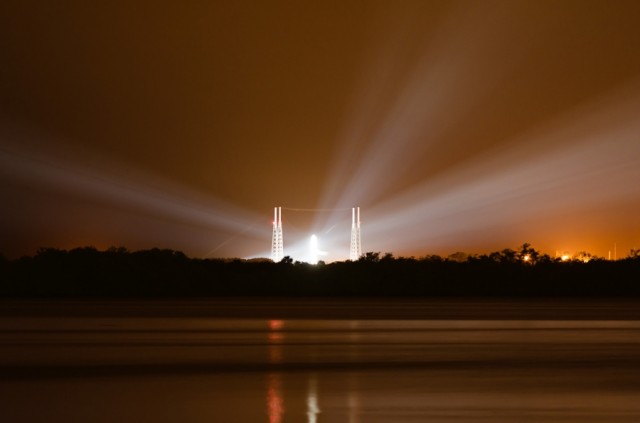
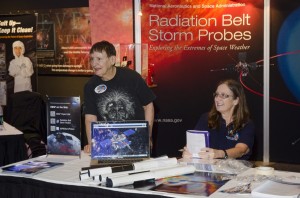 After a couple fitful hours of sleep, it was time to get up again and head back out to Kennedy and the Visitors’ Complex! I volunteered at the RBSP exhibit booth there next to the IMAX theater answering questions about the radiation belts and the RBSP mission, as well as leading youngsters through a variety of short activities we had set up to demonstrate the effects of magnetic and electric fields. It was also a good time to reconnect with some great educators I met at the RBSP Teachers’ Workshop held at APL earlier in the month. My complimentary ticket to the KSC Visitors’ Complex didn’t include access to the bus tour, so no up-close tour of the VAB for me, but they do have a pretty cool Rocket Garden where they have several launch vehicles on static display.
After a couple fitful hours of sleep, it was time to get up again and head back out to Kennedy and the Visitors’ Complex! I volunteered at the RBSP exhibit booth there next to the IMAX theater answering questions about the radiation belts and the RBSP mission, as well as leading youngsters through a variety of short activities we had set up to demonstrate the effects of magnetic and electric fields. It was also a good time to reconnect with some great educators I met at the RBSP Teachers’ Workshop held at APL earlier in the month. My complimentary ticket to the KSC Visitors’ Complex didn’t include access to the bus tour, so no up-close tour of the VAB for me, but they do have a pretty cool Rocket Garden where they have several launch vehicles on static display.
 As the storm cell approached the Cape, the weather conditions became less and less favorable for a launch and once again at 0425, they scrubbed. No launch for us. The night wasn’t a total loss, though. We did get to see an alligator swimming by in Banana Creek right in front of us, and thankfully on the other side of the fence.
As the storm cell approached the Cape, the weather conditions became less and less favorable for a launch and once again at 0425, they scrubbed. No launch for us. The night wasn’t a total loss, though. We did get to see an alligator swimming by in Banana Creek right in front of us, and thankfully on the other side of the fence.